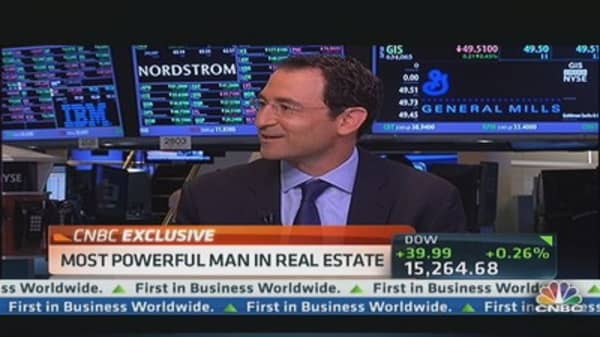The rarefied few who can afford to shell out tens of millions of dollars for an apartment in one of the gleaming new condominiums being built across New York City may be searching for luxury, but in some cases they will find an unexpected perk: a break on real estate taxes that can mean tax bills as low as $96 a month.
At 56 Leonard Street, where a penthouse just went into contract for $47 million, the buyers are poised to receive a 76 percent break on their real estate taxes.
At 150 Charles Street, an ultraluxury development in the West Village, the tax break is 70 percent.
And at , the 90-story skyscraper in Midtown where asking prices top $10,500 a square foot, the tax break is an eye-popping 94 percent.
A recent review of the offering plans for some of the city's most expensive new apartment buildings offers an interesting peak into the perquisites and disadvantages of a lavish lifestyle. There are the windfalls, like the generous tax breaks, but there are also oft-overlooked expenses, like mandatory health club and dining-room fees, that can add to a buyer's bottom line.
At 56 Leonard Street, for example, the buyer who is in contract for the record-breaking penthouse would typically pay $140,000 a year in real estate taxes, according to estimates from the offering plan. But because the project laid its foundation in 2008 — it stalled during the downturn and was resurrected only recently — it was eligible to apply for a 10-year tax abatement. The city has given its preliminary approval, which means that when the building is completed, the penthouse buyer will pay just $33,000 annually for the first two years, with taxes progressively increasing through the remaining eight.
More from the New York Times:
News Analysis: In Zimmerman Case, Self-Defense Was Hard to Topple
The Great Divide: How Intellectual Property Reinforces Inequality
Chicago's Intern 'Boot Camp' Is a Rehearsal for Life or Death Medical Issues
The tax abatement, known as the 421A program, was established in the 1970s, during the depths of the city's financial crisis, to spur residential construction. In the 1980s, as the economy improved, the program was modified, and affordable-housing requirements were added. In 2008 it was substantially scaled back, although some buildings, like 56 Leonard, made it just under the wire to get the abatements by starting construction before the stricter rules went into effect.
The case for One57 is slightly more complex. Its location on West 57th Street would prohibit the developer from applying for the abatement, but in January the state legislature passed a broad housing bill that included an exemption for the building. The legislation gave a similar pass to several others, including 99 Church Street, otherwise known as 30 Park Place, an ultraluxury condominium that the developer Larry Silverstein is building in Lower Manhattan, and to a site owned by the developer Joseph Sitt at 516 Fifth Avenue in Midtown.
The city has not yet signed off on the abatement, but if it does, a result will be an annual real estate tax bill of under $18,000 for the buyer of the penthouse at One57, assuming it sells for its $115 million list price. That tax bill would more typically apply to a $3 million apartment; for this penthouse, the typical bill would be nearly $300,0000, according to the offering plan. Similarly, the least expensive unit in the building, a 1,000-square-foot one-bedroom, has monthly taxes of just $96, which works out to $1,157 a year—versus $19,234 without the tax break.
(Read More: Apartments reap rewards of rising rates)
"Yes, we allowed an exemption," said Senator Martin J. Golden, who sponsored the bill with Assemblyman Keith L. T. Wright, "but I am a proponent of the 421A program, and I believe it was the right thing to do." An Extell spokeswoman said in a statement that the legislation merely "remedied an oversight" in the 421A program.
The exemptions have given some market observers pause, particularly in the case of One57, which was already under way when the legislation was passed and presumably would have been built even without the tax break. "The idea of the program was that tax subsidies can be an important tool to create residential housing and affordable housing that otherwise wouldn't be built," said Vicki Been, the faculty director of the Furman Center for Real Estate and Urban Policy. "I don't see how giving a tax break to a building like One57 helps either of those goals."




